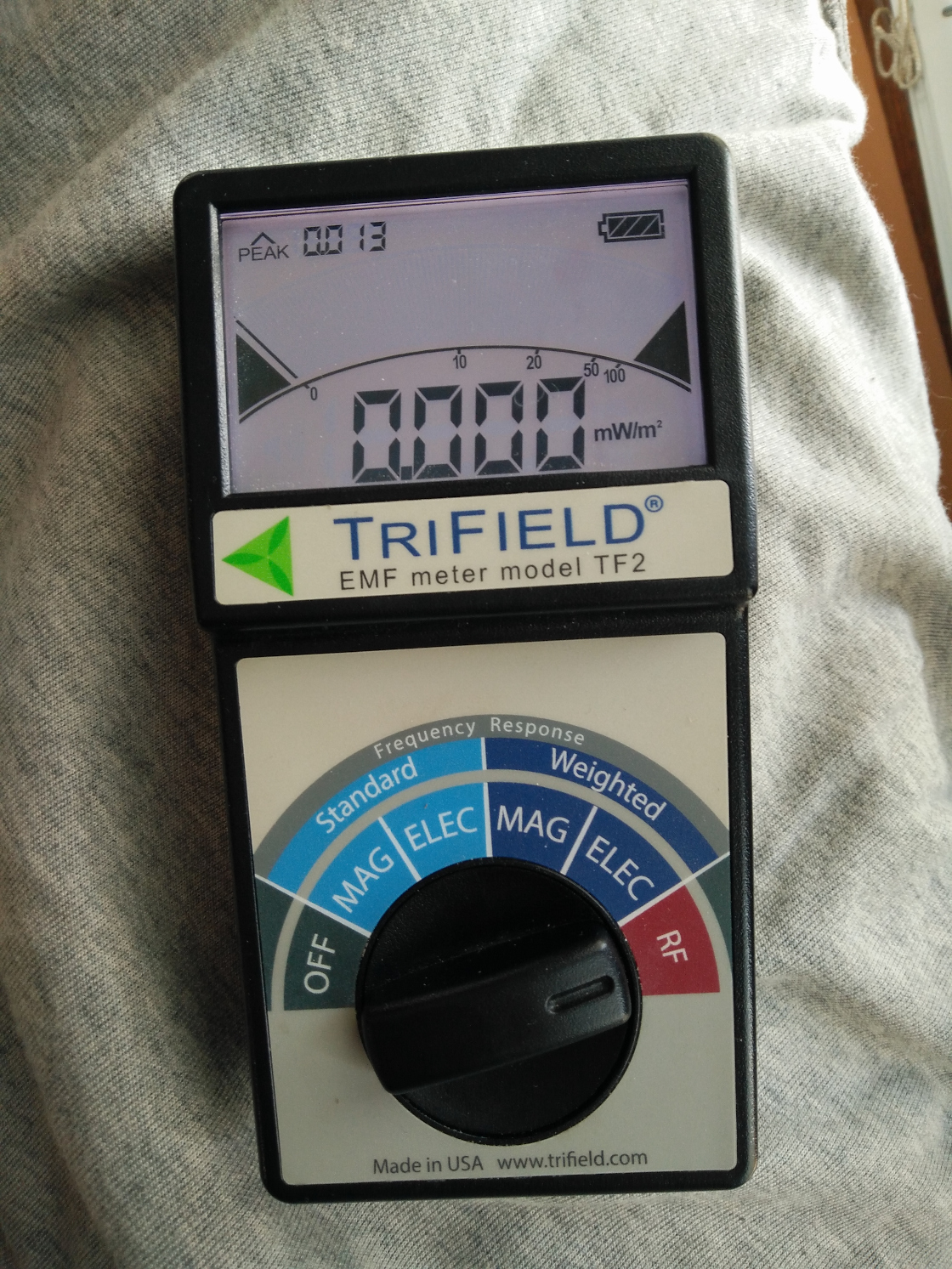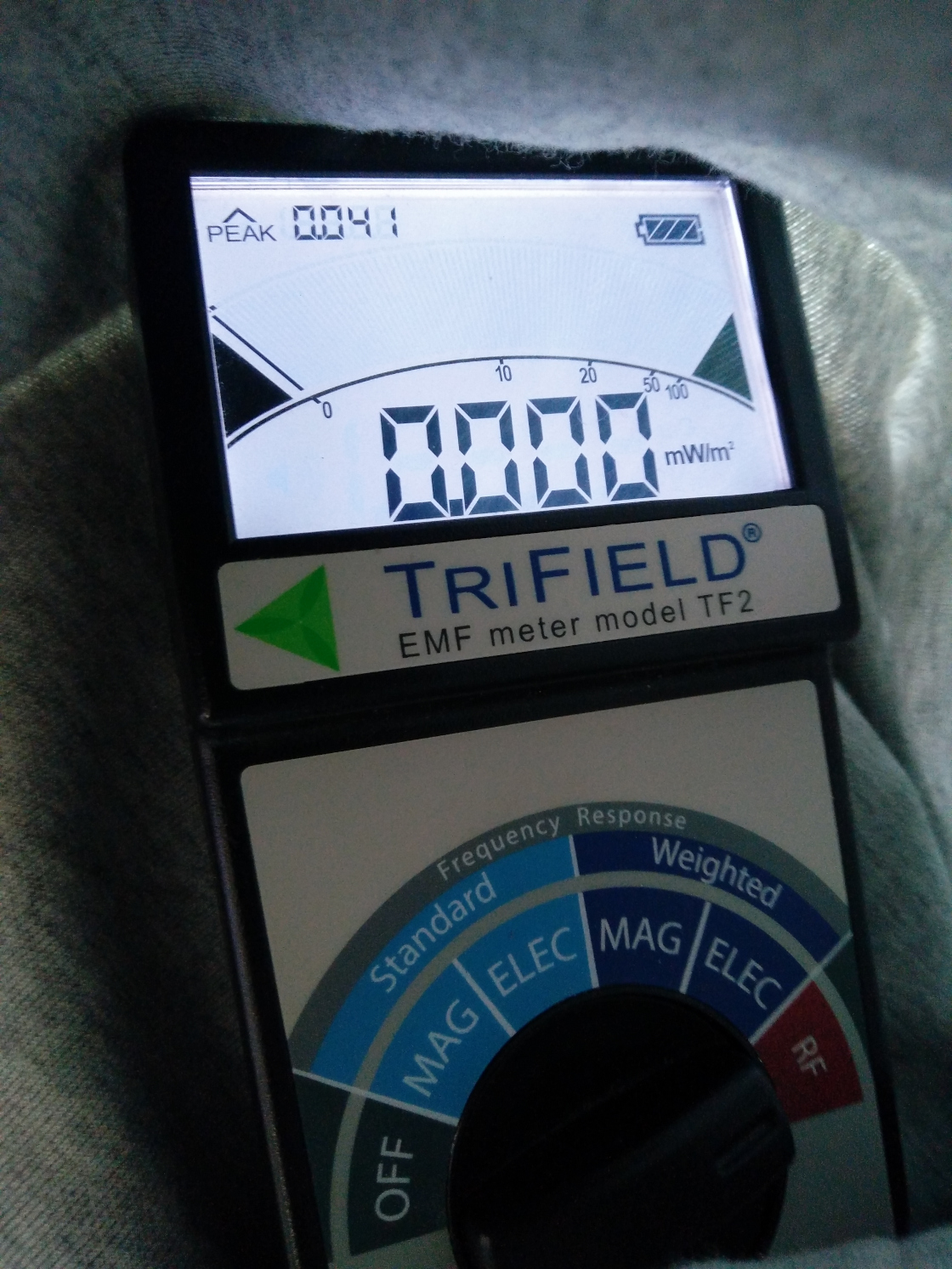Don’t Make These Mistakes when Protecting Yourself from EMFs
A word of caution when using EMF-shielding materials, and how to shield yourself the right way.
Doing More Harm Than Good
During my final months in the house responsible for my sensitivity, before I fully acknowledged the severity of its effects, I shelled out for a few yards of EMF-blocking, silver infused jersey knit and nearly transparent, black nickel sheers. No more worrying about cell towers now, I thought: I’ll make hats for the kids and me, cover the most vulnerable entry points of the house, and we’ll be set for the future, or at least nine months out of the year in our bitter state.
I got to work and immediately cloaked the windows in a near transparent material, but was feeling so ill at the time, before I could undertake any new sewing projects, decided to convert the knit as a mock sleeping bag/cocoon, if you will, and rolled myself up each night, relieved that I’d gain several hours of protection. It’s a little silly in hindsight, but if you were that desperate, you’d try anything, too.
By the end of the week of my protective ritual, however, I was mortified to discover that, instead of sleeping better and feeling my energy return, I felt markedly worse. Incredulous, I whipped out my handy-dandy Trifield 2 EMF meter and wrapped it in both fabrics. Signal reading fell to zero.
How, then, was it possible for this fabric that proved its protective properties, cause my condition to worsen?
Rookie Mistakes EMF Vendors Don’t Warn You About
As reassuring as it is knowing that a variety of shielding products and materials are becoming increasingly available, what I – and every single other EMF-shielding vendor that’s trying to sell you “shielding” hats and shirts – failed to take into account were two fundamental details that can cause these well-intended products to inflict more damage than offer protection.
1. The Human Lightning Rod
The first unintended caveat of these fabrics lies in the specific materials necessary for EMF shielding, which makes them a double edged sword. Silver, nickel, copper, even aluminum, all necessary for attenuating signals, are all extremely conductive, and as such, may attract stray currents when worn or used near sources of “dirty electricity” like poor wiring, outlets, and virtually every electrical device you use. Granted, electrical fields do not operate the same way as radio frequencies, as the strength of their fields drop substantially quicker with distance, but if you happen to be sleeping with a shielding hat while living in a home with working electricity, you run the risk of amplifying your exposure. In short, you can transform yourself into a human lightning rod pretty easily.
This is why large shielding products like paint and some bed canopies must be properly grounded: the electric currents they conduct need to be safely redirected away from us. For smaller items, or ones intended to be worn around on your person, this naturally becomes an impossible task, and relies on the user to ensure all conductive products maintain a safe distance from all electrical sources, which is a monumental task no matter how well-wired the home.
2. The Faraday Cage Effect
Even if you’ve eliminated the potential for picking up electric fields, there is still the potential for reversing the benefits of the EMF shielding altogether. See, these materials attenuate radiation, meaning, they reduce the signals that penetrate the surface; they don’t zap them on impact. And while this is a wonderful for creating reliable barriers, these effects can backfire a few ways.
First scenario: let’s just say you fortify your entire home, preventing nearly all sources of RF from entering. Congratulations, you’ve made a faraday cage! However, this means you’ve created a two-way barrier, so what do you think happens when you pull out your cell phone or even – god forbid – turn on your wifi in a fortified chamber? All those little signals that may or may not have been problematic on their own are now echoing throughout your house, bouncing off the walls with no means of escape.
It seems obvious, but it’s an easy mistake to make. Bear in mind, my wifi was off during this entire debacle, but my upstairs neighbor’s wasn’t; plus, I had two cell phones, two computers, and a small collection of other devices all trapped in a room with EMF-proof window coverings. In my discovery, I took two readings of my window in the exact same location: the first was in front of the window “protected” by the fabric, and the other after I had detached the fabric from the window, exposing it to the “elements” of the nearby cell towers. Guess which was higher? Remarkably, the one behind the protective barrier of fabric. I had, in fact, amplified my own signals even though the nearby cell towers were the original culprits behind the elevated ambient EMF.
Now, the rooms with little internal EMF (like our bedrooms) were substantially more protected with window coverings, but it shows to prove how much awareness of all nearby devices is required to ensure you’re not doing more harm than good.
The same goes for EMF-shielding paint, as well. In fact, in order to properly protect you, paints needs to be grounded, which requires a separate process altogether.
Ultimately, no matter where you are or how saturated your home may be in EMFs, I would not advise using shielding materials where there are any wireless devices in use. Whether you opt for paints or curtains, it is critical to use these responsibly and know the sources of EMF before shielding any area of your home.
The Faraday Cage Effect May Work the Same way with Clothing
As far as EMF clothing is concerned, the same principles already described above still apply, albeit with one more precaution. Since we’ve already established that the faraday cage effect can function as a double-edged sword, what do you think happens to those signals when you cover only part of yourself in protective material?
Well, technically, it depends on the frequency, but those below 100MHz, or some radio waves, can still pass through the exposed areas of your body like a spoon through a bowl of pudding and, just like with our faraday cage, bounce off the interior of your “protective” clothing, possibly increasing the signal strength inside your body.
In fact, this concept was confirmed personally by a radiologist who advised against using one of those heavy lead vests they offer during x-rays on account that research was beginning to show they, too, amplified signals!


Now, obviously, I don’t possess the ability to implant an EMF meter in my flesh and test this exactly, but you can see the difference in the peak numbers measured when exposed the low levels of EMF in my house as opposed to being partially covered, like how a hat would work. .013 mw/m2 vs .041mw/m2. They’re tiny numbers, but the difference isn’t insignificant.
Believe me, if I thought for an instant these simple accessories would block out our inescapable cell signals, I’d be living in that hat 300 days out of the year. Maybe it helps for some, but for me, I just can’t justify a practical benefit.
Solutions Proven to Work:
I know we’re in the midst of a crumbling economy and our budgets are tight, but rest assured your hard-earned cash won’t go to waste by pursuing smart, lasting solutions.
- The most obvious: yet most challenging – is to live in an area at least .25 miles away from a cell tower, .5 mile from a radio tower, and roughly 1000 feet away from 5g antennas. This is the bare minimum, and a greater distance is advised for more sensitive individuals. Rest assured, though, the strength of EMFs decrease according to the inverse square law, so even the levels of even a 1/3 of a mile will be drastically lower.
I know how much it sucks to have to move, but if you’ve begun to feel the effects of living too close to outside sources of EMF, you have no other option. You will not improve until you remove yourself from the source. The amount of shielding, proofing, etc. that would be required to reduce the ambient EMFs would far exceed any moving or increased rent costs, and if they’re caused by high-voltage power lines, nothing but sheer distance can protect you from their powerful magnetic fields or extremely low frequencies (ELF). - Protect yourself where it counts. Despite the earlier critique of creating an impenetrable fortress in your own home, there is one easy way to block out 99% of EMFs for at least a 1/3 of your life: encase your bed with an EMF canopy! What I love about this option is that its efficacy is easily proven (just by whipping out the handy-dandy EMF meter), so there’s no guesswork in wondering whether it’s doing what it’s supposed to do. Better yet, sleeping in a 0 EMF environment has been found to “improve[s] immune function, redox and inflammatory states, and decrease the rate of aging.” That’s tremendous! Not to mention, as someone with EHS, it’s reassuring to know there’s always somewhere “safe” to escape when unexpected life circumstances hit.
Once again, though, when sleeping in such a large conductive or semi-conductive space, it’s imperative to make sure there is no electric interference, which requires one of the following:
- your bed is far enough away from outlets and floor or wall wiring
- you install proper grounding equipment to guide currents away from the bed, or
- flip off the bedroom switch on your breaker box before bed each night. Personally, I opted for the latter option.
Nonetheless, if you’re going devote such precious resources as your time and money to protecting yourself, it is essential to ensure that your efforts aren’t undermined – this is your own health, after all. But as long as you keep these two concepts in mind, however, you’ll be off to a sound start.


